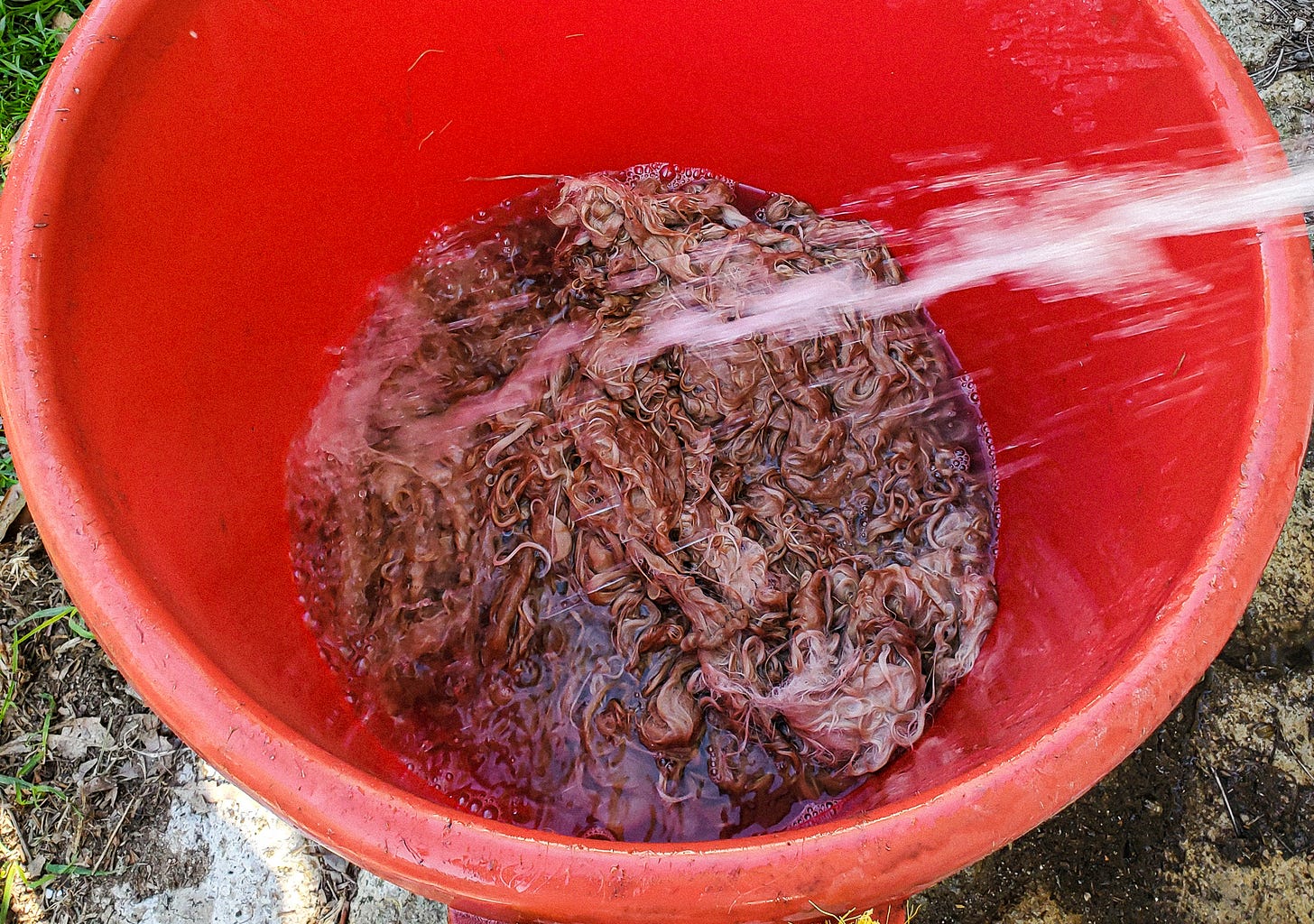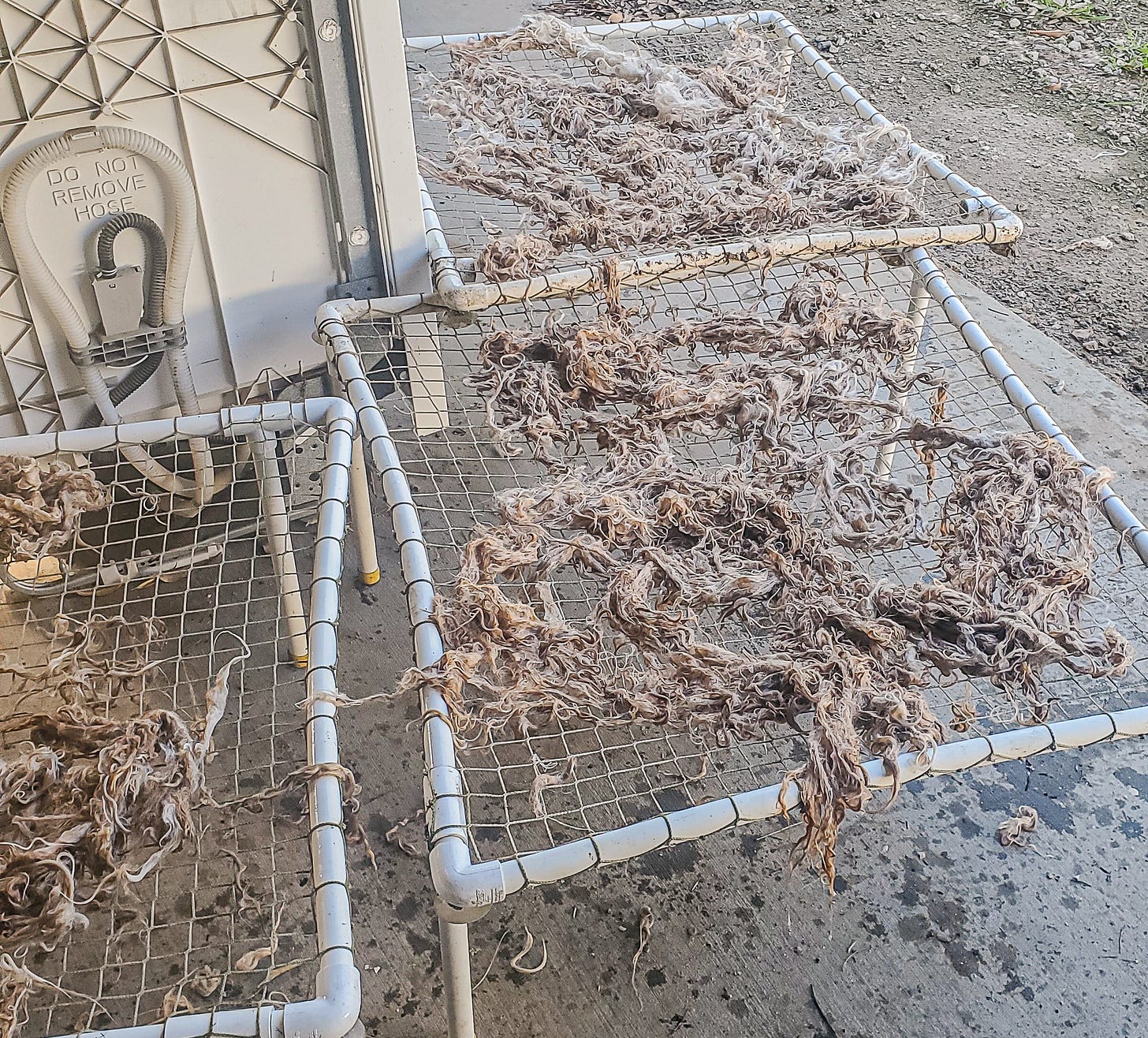While catching up & discussing future plans and what we'll do for the day we gazed at the mama alpacas & their baby (cria) alpacas who were still nursing grazing & playing in the field in front of us. As we sat in a small grove of large trees, the Brazilian Elm canopy above us soothingly hummed the buzzing of a legion of bees fervently gathering nectar from the tens of thousands of new blossoms. What a relaxing way to start my shift! After a while, we got up to check on some of the other fields.
The Soil. . . It's Burping Again
As we approached one of the south fields containing yearlings, we both noticed the soil sparkling under the sun. Upon closer inspection, we saw hundreds of shards atop of the soil. With the recent rain & winds, along with other natural forces unknown to us, the soil was burping up the past once again. We decided to spend some time simply picking up shards amidst the curious alpacas. The shards will be used (eventually) a labyrinth Cindy is envisioning.

More Shards & Regenerative Soil Options in the Nursery Pasture
We then went over to inspect a field that's used as a nursey when needed. Cindy was thinking about rototilling it & planting grass, in preparation for use later in the year. As we walked around the pasture, we picked up even more shards. A couple weeks ago when we tumbled some fiber in anticipation of washing it, many small pieces of fiber collected on the ground under the tumbler. Because Cindy is interested in regenerative farming, we talked about rather than rototilling, which disrupts the fungal, bacteria, & nutrient network endemic in the soil, why not experiment and use some of the alpaca fiber (a natural compost) discarded by tumbling process topped with a layer of alpaca poop instead of rototilling? There is an entire field of alpaca poop 2-3 feet deep on the east side of the ranch - an endless supply! Either option would take about the same level of effort (i.e., rototilling vs moving poop). She might even get the Ventura Agriculture Extension to help do statistics on the alpaca fiber-compost & poop option!
Fun Facts:
Neither alpacas themselves or their poop have much odor. Because alpacas are such efficient eaters/digesters, their poop pellets are lower in organic matter than other livestock, thus doesn't have that unpleasant stink. When an alpaca is having an issue with its digestive system, the first clue is stinky poop.
Some background: Both alpacas and llamas have three stomachs lending to the efficiency in which alpacas absorb nutrients.
Stomach #1 (the Rumen) is a large compartment that stores food for 48 to 60 hours. It ferments food with a potent mixture of bacteria, protozoa, and fungi. This stomach also has muscular movements that keep the food stirred and mixed up. It’s also where cud is regurgitated from for further chewing!
Stomach #2 (the Reticulum) has a honeycomb-like structure, which works as a filter, separating anything bad the alpaca has eaten by mistake as well as returning large pieces of food for further chewing.
Stomach #3 (the Abomasum) has a similar function to the human stomach, as it breaks down food and stomach acid for further digestion in the intestines by enzymes
Vet-Protem Cindy Doing Her Thing

Fiber Wash & Rinse Cycle
As Cindy talked about the upcoming show season, which happens throughout the spring, I realized she could be gone some of my "volunteer" days. I offered to - on the days she is gone - to start tumbling, cleaning, & drying the 500+ pounds of fiber we sorted a few weeks ago. After all, it's of no use to anyone unless it's cleaned, dried, & ready for production. She agreed and as our last task of the day, we cleaned and rinsed some of the fiber we tumbled a few weeks ago so I could get some hands-on experience before show season starts.
I'm already dreaming of ways to better automate & scale this process!










